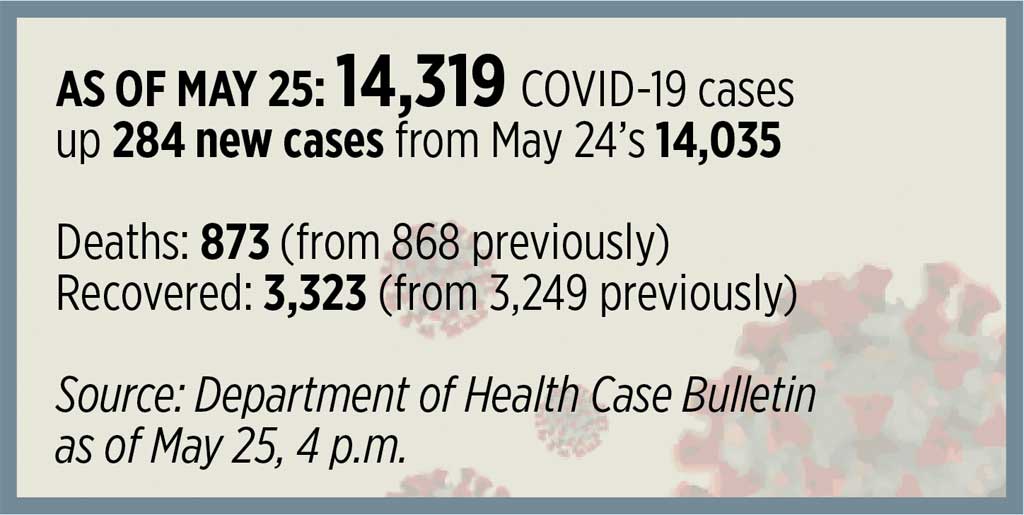They are the unseen hands helping a critical service running as millions are locked down in their homes amid the coronavirus pandemic.
Quietly working in the background of a crisis that has brought Luzon and other parts of the country to a near halt, a skeletal force of aircraft mechanics continue to report for work every day, making sure that airplanes going on flights exempt from travel restrictions depart and arrive safely in their destinations.
Around a quarter of the 3,300-strong Lufthansa Technik Philippines (LTP) workforce, remain on duty every day to ensure airworthiness of airplanes, servicing aircraft in key ports such as Manila, Clark, Cebu and Davao, of which close to 300 work at the terminals and the rest work on aircraft maintenance tasks at the base.
While it is a task largely unnoticed, keeping aircraft maintenance available is critical at this time, as they ensure the safety of airplanes carrying crucial cargo such as food and medical supplies, and aircraft used to bring home Filipinos overseas stranded because of travel restrictions.
“We contribute to our country’s goal to ‘flatten the curve’ through servicing and providing flight mechanics to cargo flights loaded with export/import goods and medical supplies and servicing repatriation flights of our fellow Filipinos stranded abroad due to the lockdown. We commit to our country, we commit to our profession, and we commit to our colleagues in LTP. This is who we are,” said Eugene Estigoy, section manager at Lufthansa’s Manila Terminals Operations.
Despite the drastic reduction in daily flights—now at 10 flights per day from approximately 250 flights per day before the pandemic—LTP’s aircraft mechanics continue to provide service to flag carrier Philippine Airlines and other international airlines. The aircraft maintenance team, working on limited staffing, still handles two planes every day, from the usual four to five, to ensure efficiency, as well maintenance work for grounded aircraft.
“We prioritize the aircraft that needs to fly out as soon as possible. In this situation, the aircraft maintenance department current workforce capacity was reduced as the safety of the personnel who cannot enter the NCR (Metro Manila) area was greatly considered. Only those aircraft that need attention or need to fly out are prioritized to be serviced,” said Grant Aron Naval, aircraft mechanic at LTP’s Manila hangar.
Like those from other sectors who must brave the risks of exposure to the contagious disease, LTP’s frontliners were provided full sets of personal protective equipment and vitamins to make sure they stay healthy while on duty.
Sanitation booths were also placed at access points in LTP’s facilities for disinfection.
Despite the challenges of continuing to work under a lockdown, Lufthansa Technik Philippines’ mechanics remain unfailing in their duty to serve.
“Working during a scary pandemic situation has added pressure on us in line maintenance. As part of LTP’s skeletal workforce, we understand that it is not just about doing a task but a balancing act of responsibly keeping a customer’s aircraft airworthy and released on time, as well as keeping ourselves safe and in good health condition for our family,” said aircraft mechanic Joseph Jemar Villanueva, who is assigned at LTP’s Operations MNL Terminals department.
Brenda Bhee Anuran, an avionics mechanic from the same department, cited how LTP workers observe physical distancing rules while on duty to keep themselves safe.
“Being in a skeletal workforce is a big decision to make. We should consider our personal health and the health of the people around us. With a minimal manpower, teamwork, proper communications, and coordination are the keys to make everything happen and successful. We also follow the DOH (Department of Health) guidelines to avoid COVID-19 like proper distancing,” she said.
At a time of crisis, LTP workers view their jobs not just as a profession but as a civic duty.
“To volunteer to be part of the skeletal workforce of LTP is a very brave choice. It is courage over fear. I’m doing it for my family, my company, and most especially my country. It is my duty to help in this time of pandemic in my own little way for I believe I am part of those so-called brave frontliners in the aviation industry,” said plane crew chief Ramon Ganaden.


